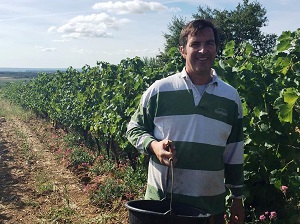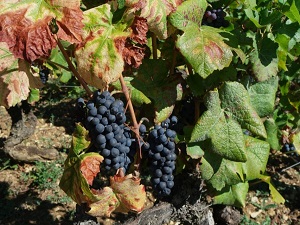An early harvest

In almost all of France’s wine growing regions, 2018 was a very early year due to the glorious sunny and warm summer that we enjoyed. In the east of the country, such as in Burgundy or Alsace, they were as much as one month early for the start of the grape harvest. At Domaine Stentz-Buecher in Wettolsheim, we harvested the pinot noir grapes on the 8th September, where normally we would do so in October.
In some regions, such as for Château de la Bonnelière, near Chinon in the Loire Valley, the summer was so dry and hot, that the maturity of the grapes slowed down at the end of summer, putting back the harvest slightly compared to the forecasts at the start of the summer.
An exceptional quality

All of our partner winemakers agree in saying that the 2018 vintage is an exceptional one in terms of quality, with lovely healthy grapes that had ripened evenly. The sugar levels needed to produce the alcohol were good with a nice concentration due to the summer heat.
Of course there still remains lots of work to do in the cellar, but all the early signs point to a great year.
A small yield
If the quality is high, the same cannot be said for the yields, the quantity being less than usual in some of the regions. Alsace had a bumper crop of a great quality, Burgundy and the Loire better yields than the previous few years, but the south and west of France suffered.
The drought during the summer and beginning of autumn caused some of the grapes to dry out. If it happens just a little, it’s not a big problem, and can even bring some added structure to the wine, but where the grapes dry out too much, they become as hard a pepper corns and have to be removed when harvesting, thus reducing the quantity.
Another problem was caused by the very wet spring which led to mildew attacking many of the wine growing regions, in some places having a significant impact on the yield, such as at Château Coutet in Saint-Emilion, where some of the merlot plots lost as much as 95% of the grapes.
Mildew reduces the yield
This year the fight against mildew was one of the principal preoccupations of our organic partner winemakers. With such a rainy autumn, it was often impossible to treat the vines, or when they were able to be treated, the next rain shower would fall quickly afterwards and wash the protection away, as organic treatments remain on the surface of the leaves and don’t penetrate inside the plant.
For example, in Saint-Emilion, more than 30mm of rain fell continuously for 10 consecutive days. The mildew set in on the leaves, and then developed on the grapes during the summer, causing them to become dry and hard. In the Côtes du Rhône region, Domaine de la Guicharde, was also affected in their Grenache plots, and Domaine Allegria noted the same for their Carignan vines.
But a smaller yield generally means that the remaining grapes are of a higher quality. Now the role of the winemaker in the cellar to vinify, age and blend the wines will come into effect, and will play a crucial role in developing and defining the quality of the 2018 vintage. We look forward to tasting the wines in the cellar as they evolve during our Vinification Experience Days next year.
Interested in learning more and getting involved in harvesting the grapes in an award-winning French organic winery? You can do so with a Harvest Experience Day with the Gourmet Odyssey Wine Experience.
Comments
No comments.




